Themed collection From nanopores to nanochannels

Editorial – From nanopores to nanochannels
This Editorial introduces Analyst's themed collection on biosensing, from nanopores to nanochannels, guest edited by Joshua Edel and Sang-Hyun Oh.

Analyst, 2015,140, 4732-4732
https://doi.org/10.1039/C5AN90056E
Optical sensing and analyte manipulation in solid-state nanopores
This review is focused on single-molecule optical sensing in nanopores and their applications to biotechnology.
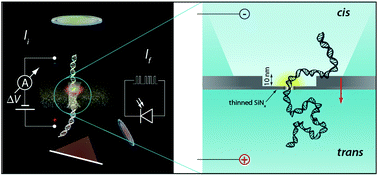
Analyst, 2015,140, 4733-4747
https://doi.org/10.1039/C4AN02388A
Conductivity-based detection techniques in nanofluidic devices
This review covers conductivity detection in fabricated nanochannels and nanopores.
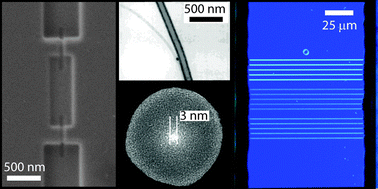
Analyst, 2015,140, 4779-4791
https://doi.org/10.1039/C5AN00075K
Label-free free-solution nanoaperture optical tweezers for single molecule protein studies
Recent advances in nanoaperture optical tweezers have enabled studies of single nanoparticles like proteins in label-free, free-solution environments.
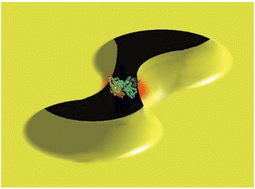
Analyst, 2015,140, 4760-4778
https://doi.org/10.1039/C4AN02213K
Sensing applications based on plasmonic nanopores: The hole story
A critical review of plasmonic nanopores for sensing applications is given with highlights from recent work.
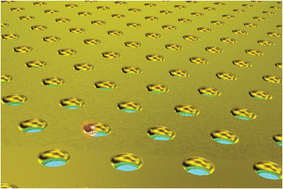
Analyst, 2015,140, 4748-4759
https://doi.org/10.1039/C4AN02258K
Molecular weight characterization of single globular proteins using optical nanotweezers
We trap a set of molecular weight standard globular proteins using a double nanohole optical trap.
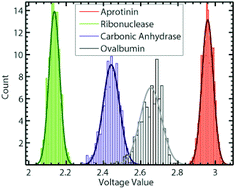
Analyst, 2015,140, 4799-4803
https://doi.org/10.1039/C5AN00026B
Metal-enhanced fluorescence and FRET on nanohole arrays excited at angled incidence
The influence of experimental parameters on the performance of plasmonic sensors is of great importance in analytical sciences.
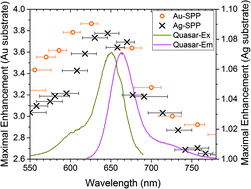
Analyst, 2015,140, 4792-4798
https://doi.org/10.1039/C4AN02257B
Experimental and theoretical investigations on temperature modulated translocation of IgG molecules through nanopore arrays
In this work, the temperature modulated translocation of IgG molecules through nanopore arrays has been investigated. Our results show that the IgG concentration corresponding to the maximum influence on the modulated ionic current by the physical place-holding effect shifts to a higher value with the system temperature rising.
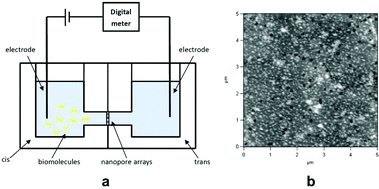
Analyst, 2015,140, 4895-4902
https://doi.org/10.1039/C5AN00853K
Fine tuning of nanopipettes using atomic layer deposition for single molecule sensing
ALD modified pipettes provides a quick and efficient method for fine-tuning the nanopore diameter which can be used for a broad range of applications including the detection of small biomolecules at the single molecule level.
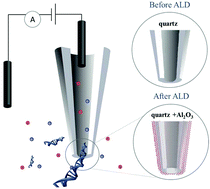
Analyst, 2015,140, 4828-4834
https://doi.org/10.1039/C5AN01001B
Topological events in single molecules of E. coli DNA confined in nanochannels
Complex structures are detected in molecules of DNA confined in nanochannels by searching for bright regions in the YOYO signal.
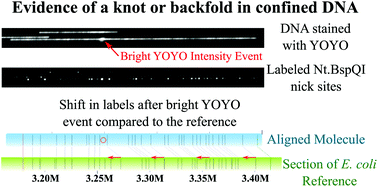
Analyst, 2015,140, 4887-4894
https://doi.org/10.1039/C5AN00343A
Nanopore analysis of amyloid fibrils formed by lysozyme aggregation
Lysozyme fibrils translocate uncoated glass nanopores at low pH without significant non-specific sticking enabling unprecedented statistics on thousands of fibril translocations and comparison with a simple bulk conductivity model.
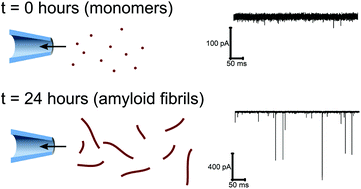
Analyst, 2015,140, 4882-4886
https://doi.org/10.1039/C5AN00530B
Antibiotic translocation through porins studied in planar lipid bilayers using parallel platforms
A comparative study of three different techniques Orbit16, Port-a-Patch and BLM applied for the investigation of antibiotic translocation.
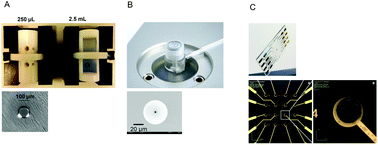
Analyst, 2015,140, 4874-4881
https://doi.org/10.1039/C4AN02335H
Use of solid-state nanopores for sensing co-translocational deformation of nano-liposomes
This works reports detection of electric field and hydrodynamic stress induced deformation of sub-100 nm liposomes during translocation through solid-state nanopore.
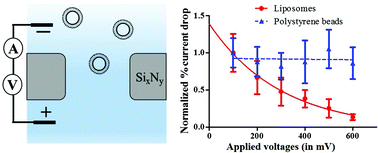
Analyst, 2015,140, 4865-4873
https://doi.org/10.1039/C5AN00250H
Theoretical analysis of ion conductance and gating transitions in the OpdK (OccK1) channel
Molecular simulations have been performed on the pore OpdK elucidating molecular details of ion conductance and a possible gating mechanism.

Analyst, 2015,140, 4855-4864
https://doi.org/10.1039/C5AN00036J
Controlled translocation of DNA through nanopores in carbon nano-, silicon-nitride- and lipid-coated membranes
The DNA threading forces through nanopores in novel carbon nano membranes and other membrane materials and their theory are presented.
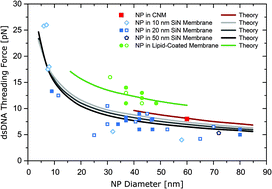
Analyst, 2015,140, 4843-4847
https://doi.org/10.1039/C4AN02319F
Superposition of an AC field improves the discrimination between peptides in nanopore analysis
There are three types of events when a peptide interacts with the pore. The AC field causes the peptide to oscillate at the entrance to the pore which can alter the type of event.

Analyst, 2015,140, 4813-4819
https://doi.org/10.1039/C4AN02180K
Analysis of fast channel blockage: revealing substrate binding in the microsecond range
The effect of filtering can be taken into account within the Markov state description to obtain the “real” power density spectrum in noise analysis of ion currents.
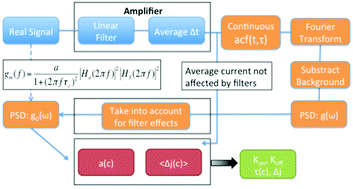
Analyst, 2015,140, 4820-4827
https://doi.org/10.1039/C4AN02293A
Presence of electrolyte promotes wetting and hydrophobic gating in nanopores with residual surface charges
Single nanopores containing hydrophobic and hydrophilic islands on the pore walls exhibit salt concentration modulated hydrophobic gating, with more concentrated solutions promoting wetting.
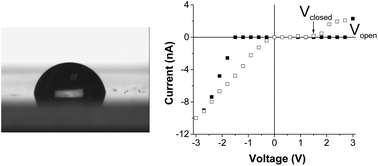
Analyst, 2015,140, 4804-4812
https://doi.org/10.1039/C4AN02244K
Effect of pore diameter in nanoporous anodic alumina optical biosensors
This study demonstrates how it is possible to tune the sensitivity of nanoporous anodic alumina optical biosensors by adjusting pore diameter.
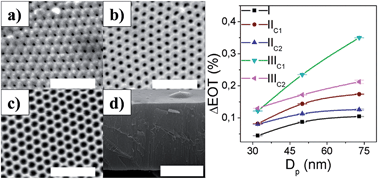
Analyst, 2015,140, 4848-4854
https://doi.org/10.1039/C4AN01408A
Nanopipette delivery: influence of surface charge
In this report, transport through a nanopipette is studied and the interplay between current rectification and ion delivery for small pipettes is examined.
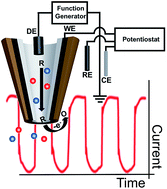
Analyst, 2015,140, 4835-4842
https://doi.org/10.1039/C4AN01073F
About this collection
The issue showcases the latest developments in nanofluidics, nanopores, nanochannels and the ever-growing use of nanopipettes. The issue has been Guest Edited by Joshua Edel and Sang-Hyun Oh and all articles in the issue are free to access until 31 July 2015